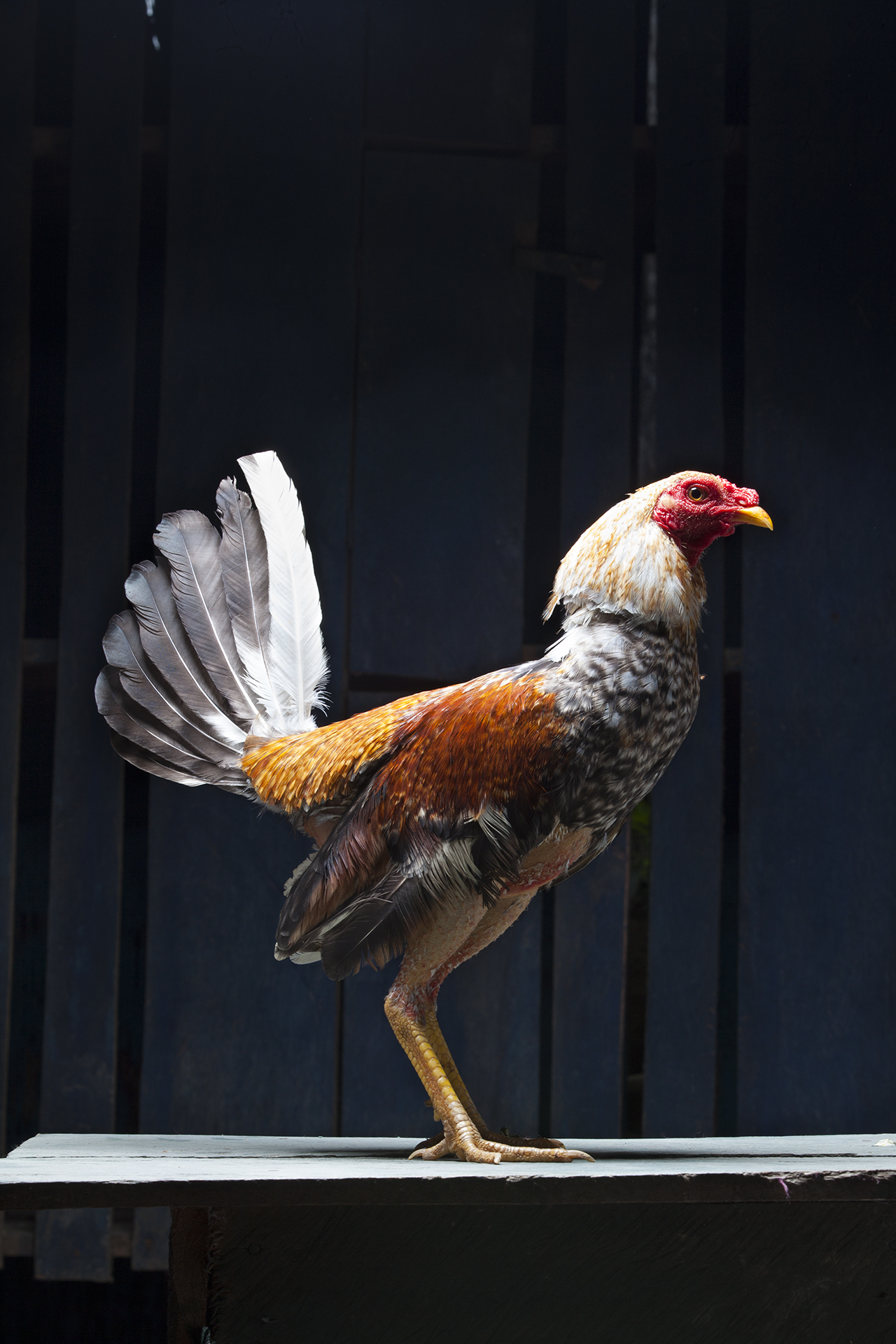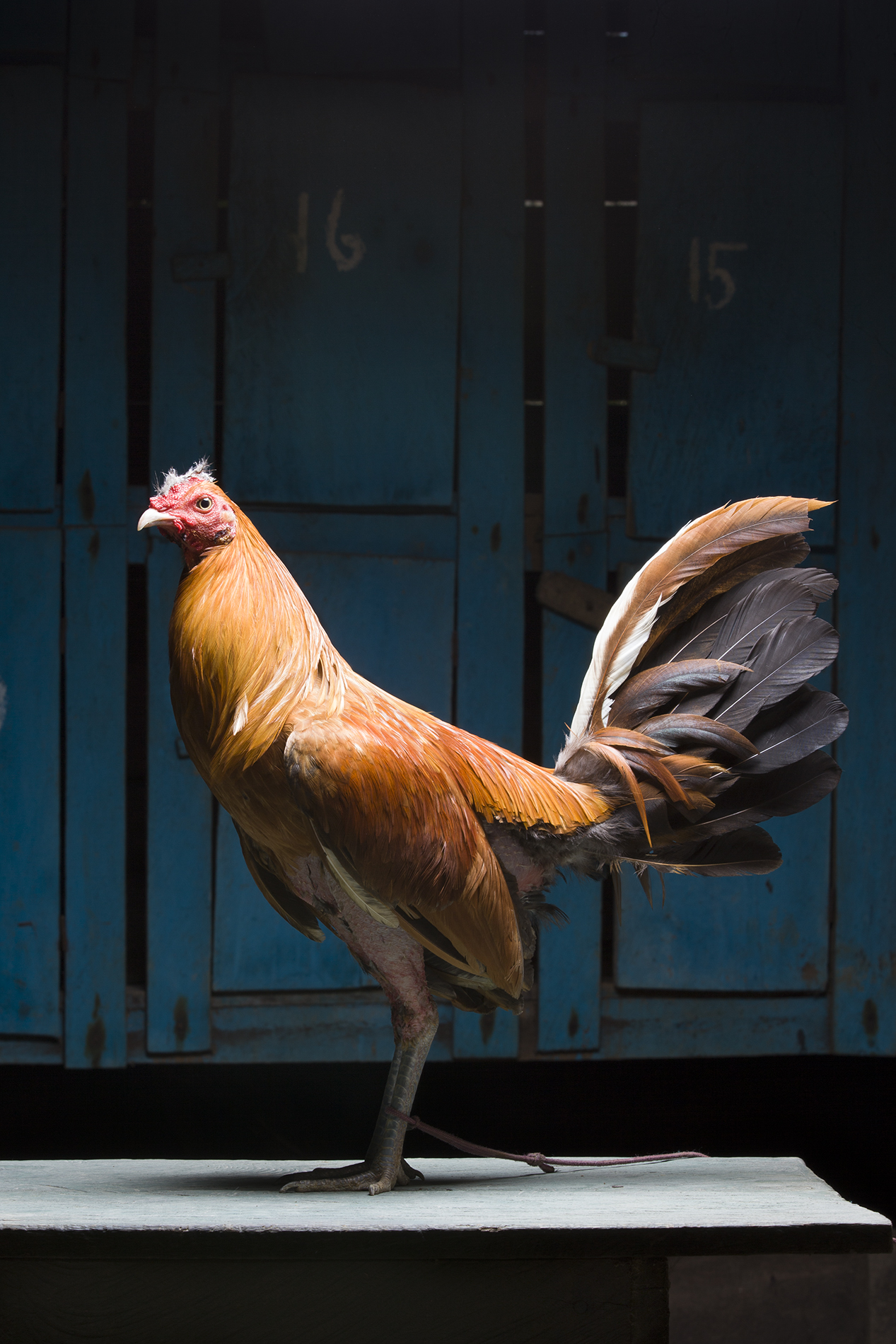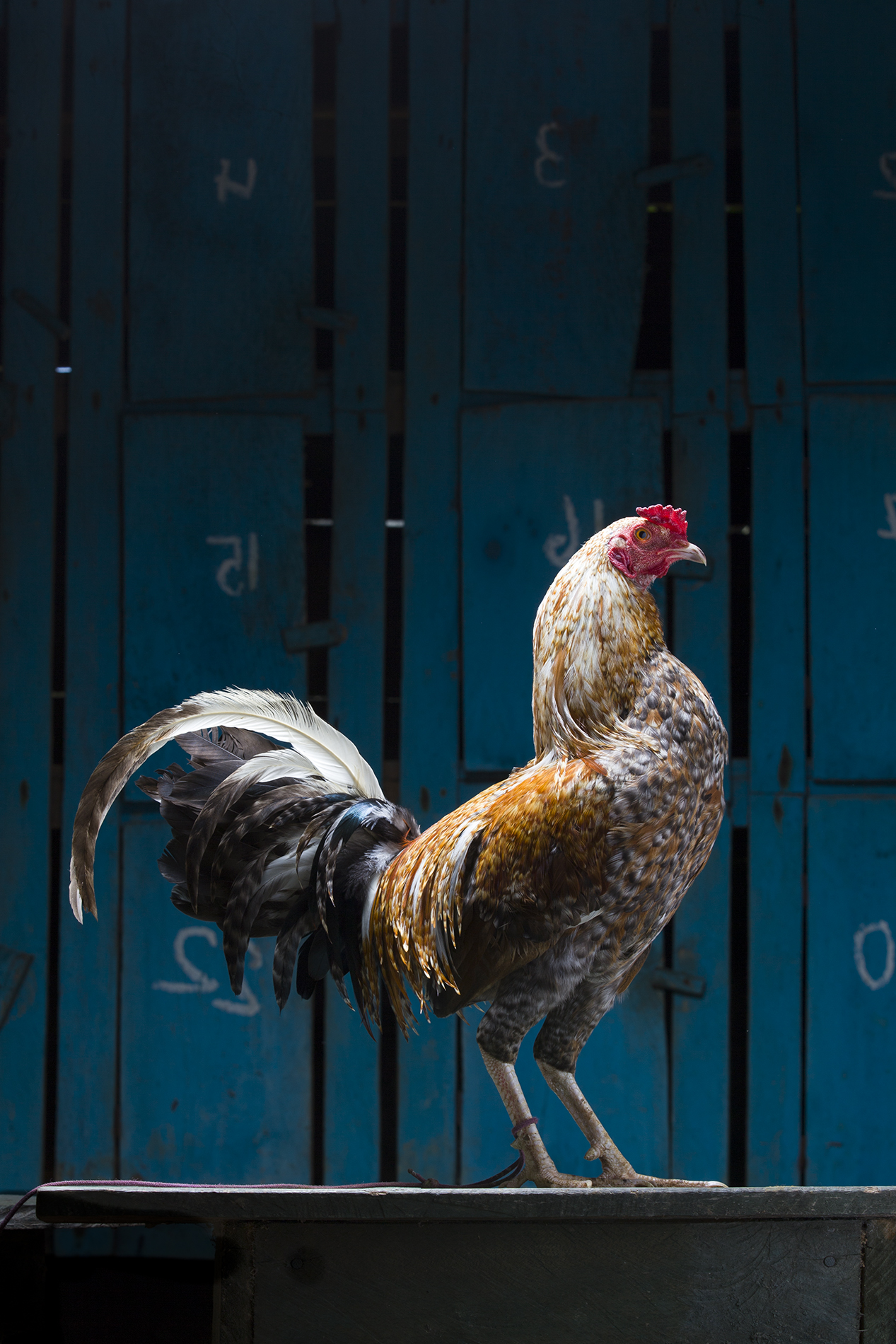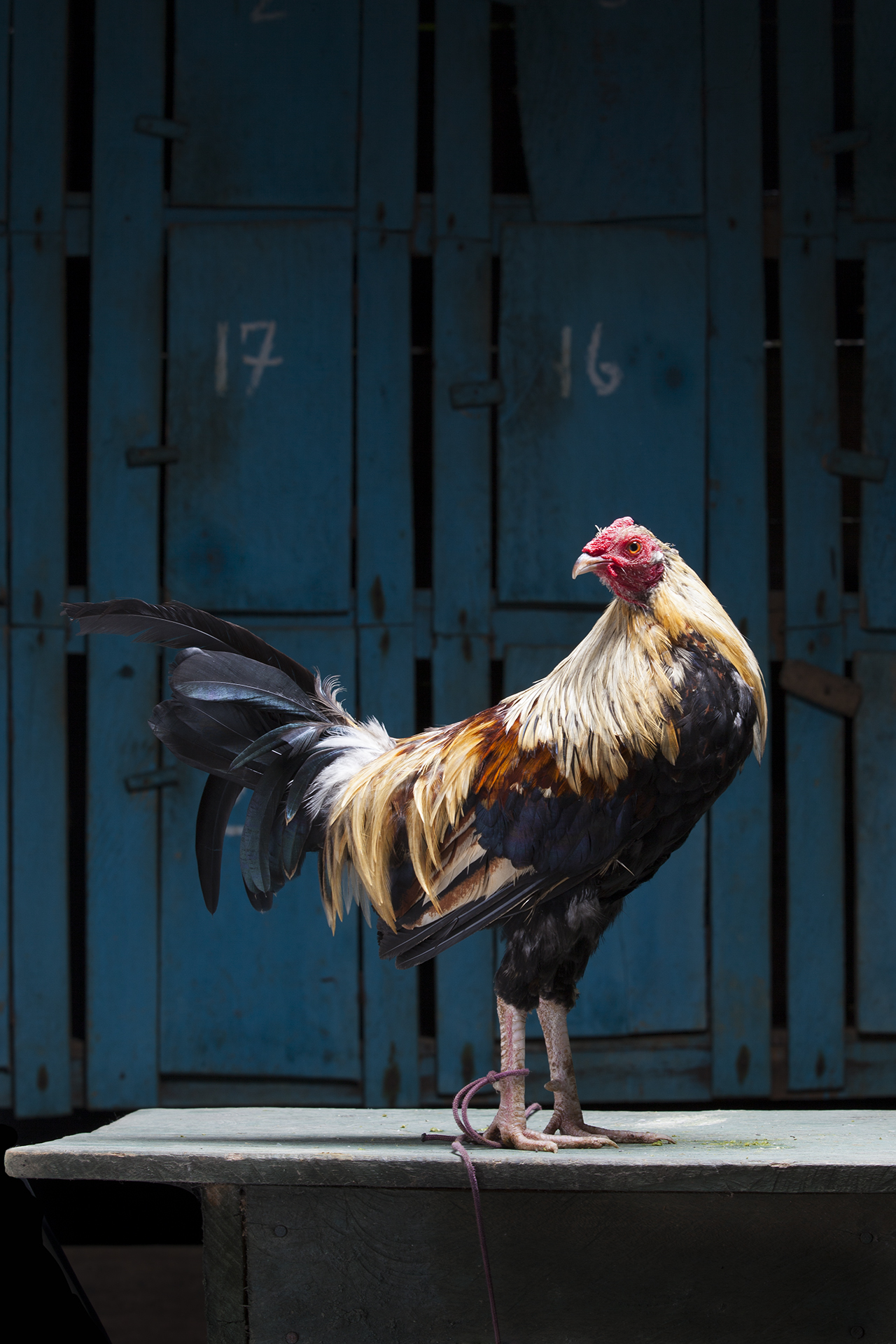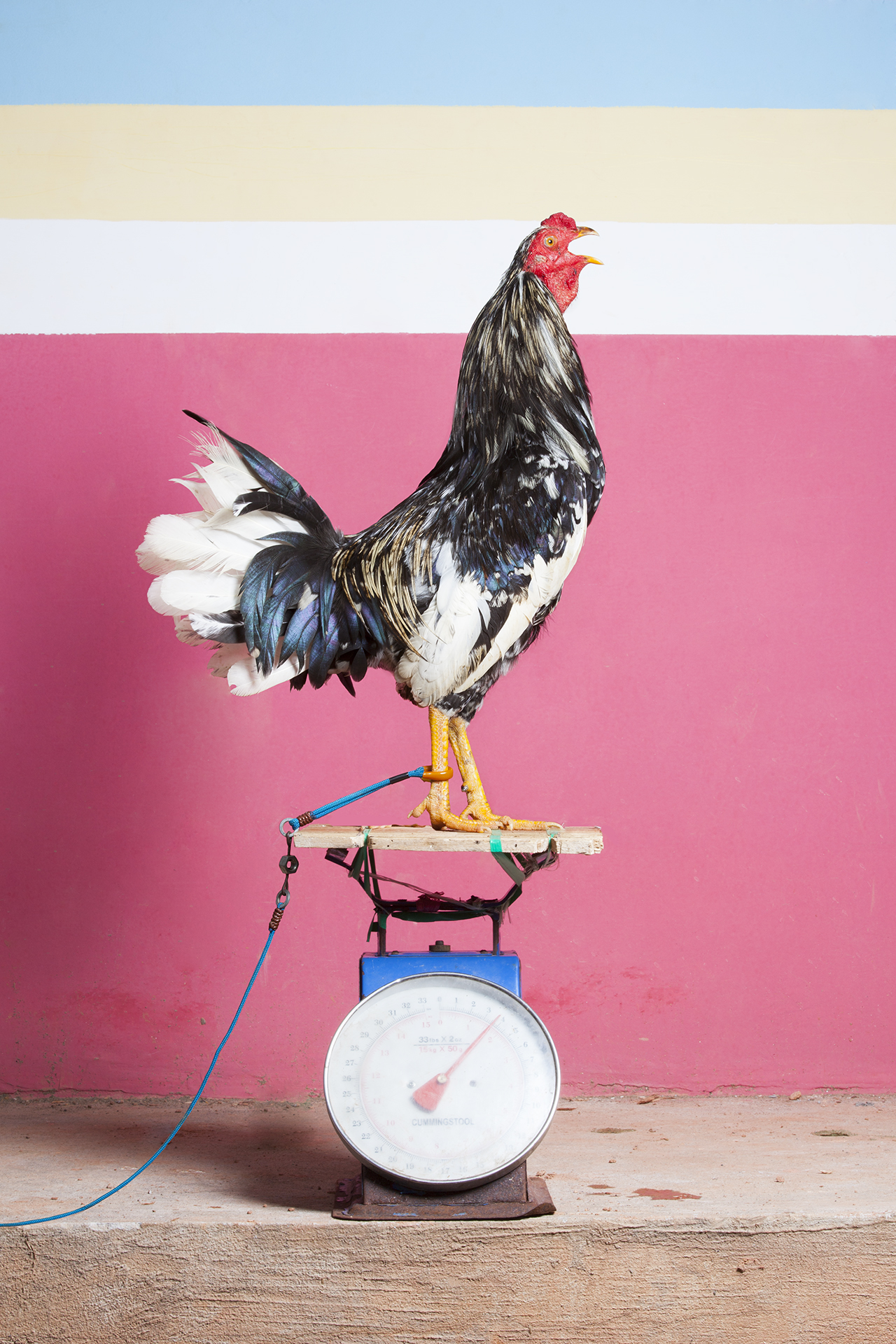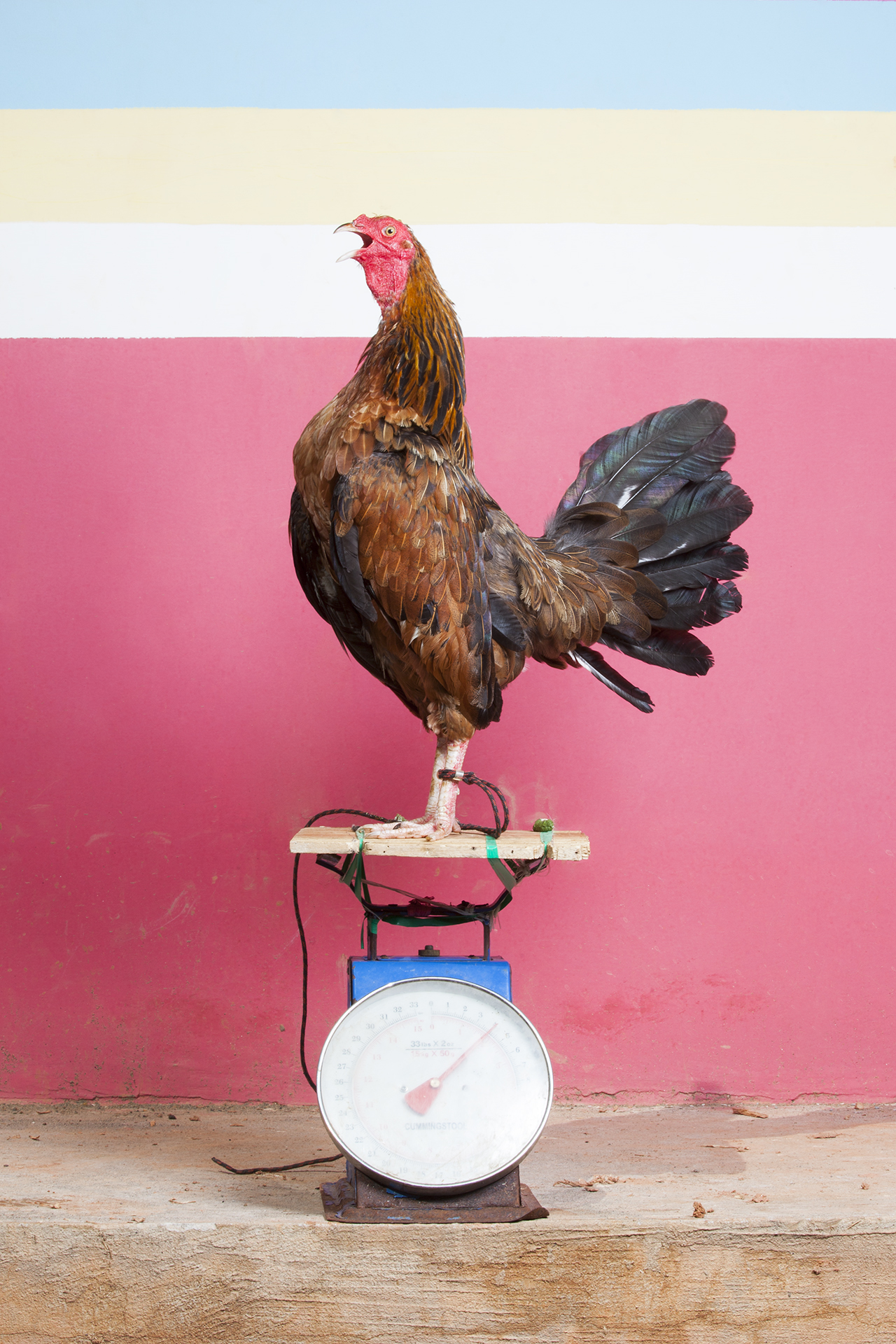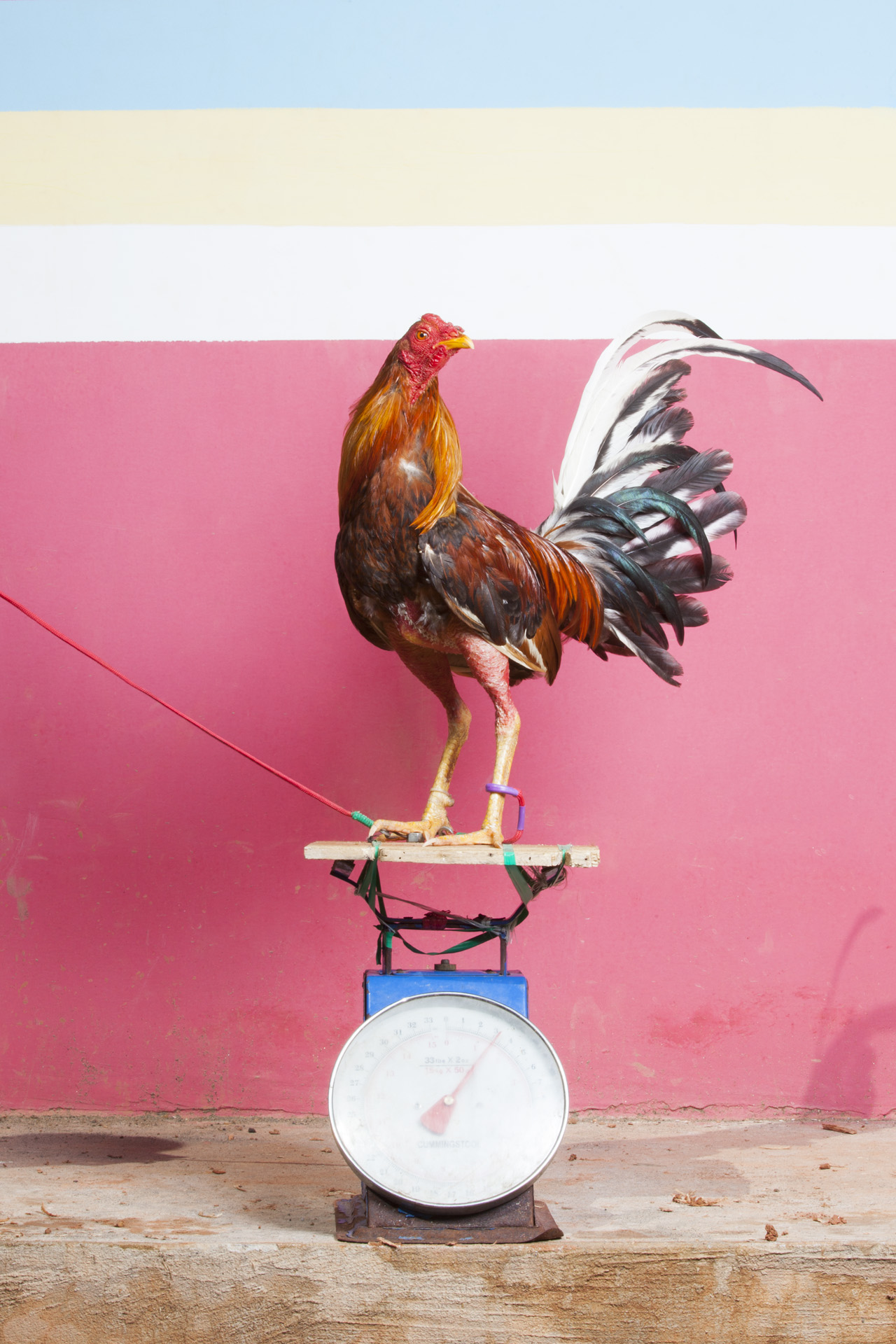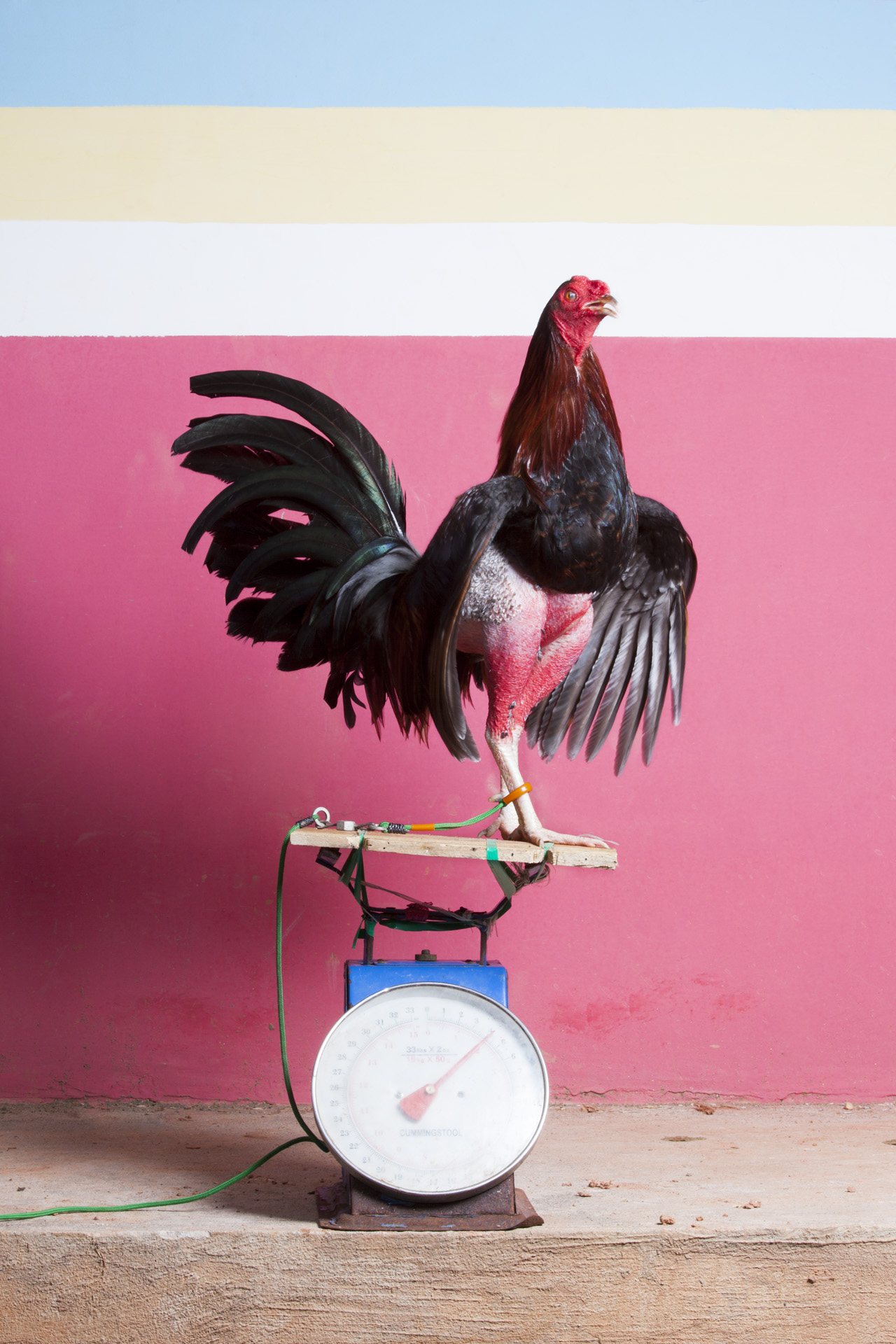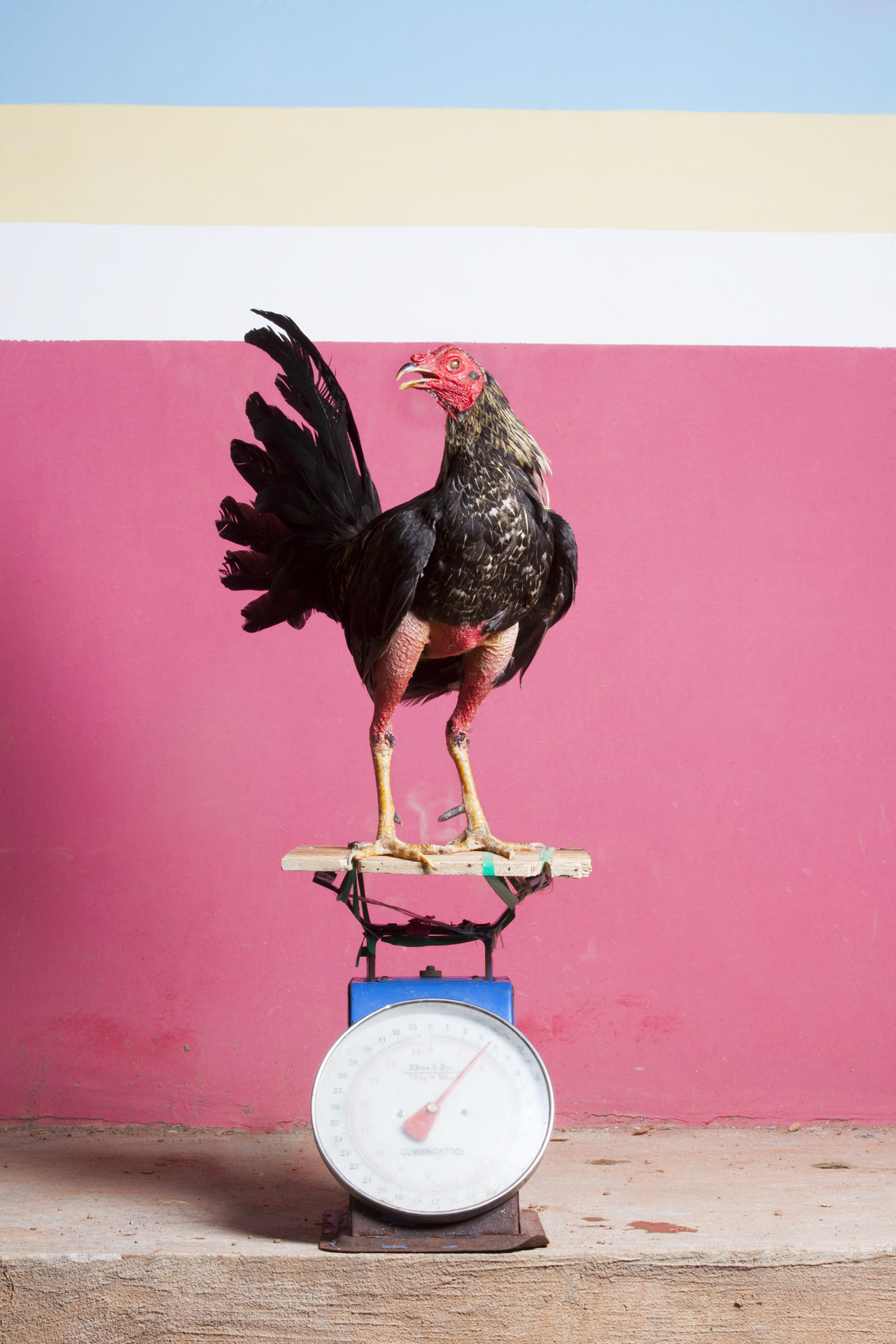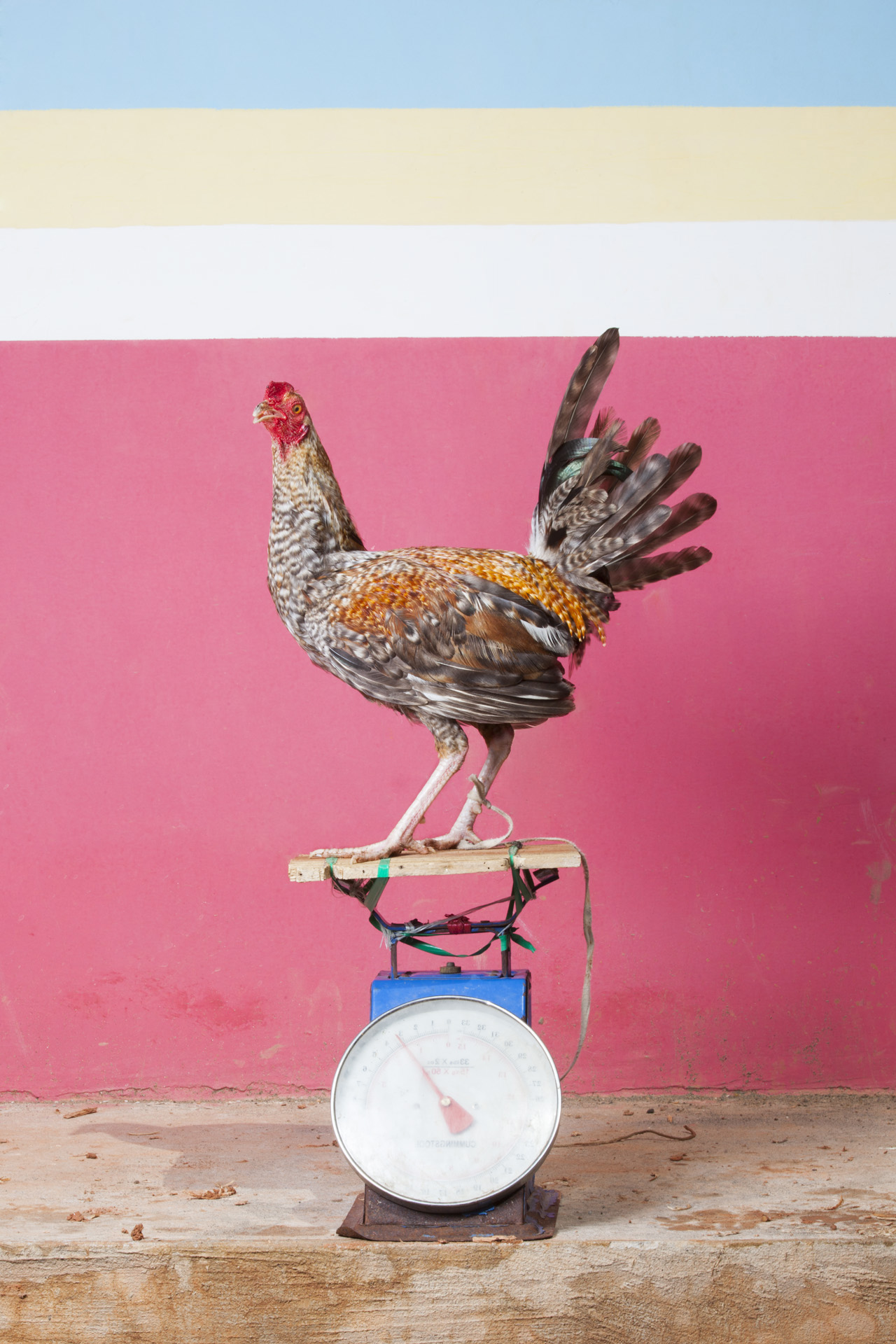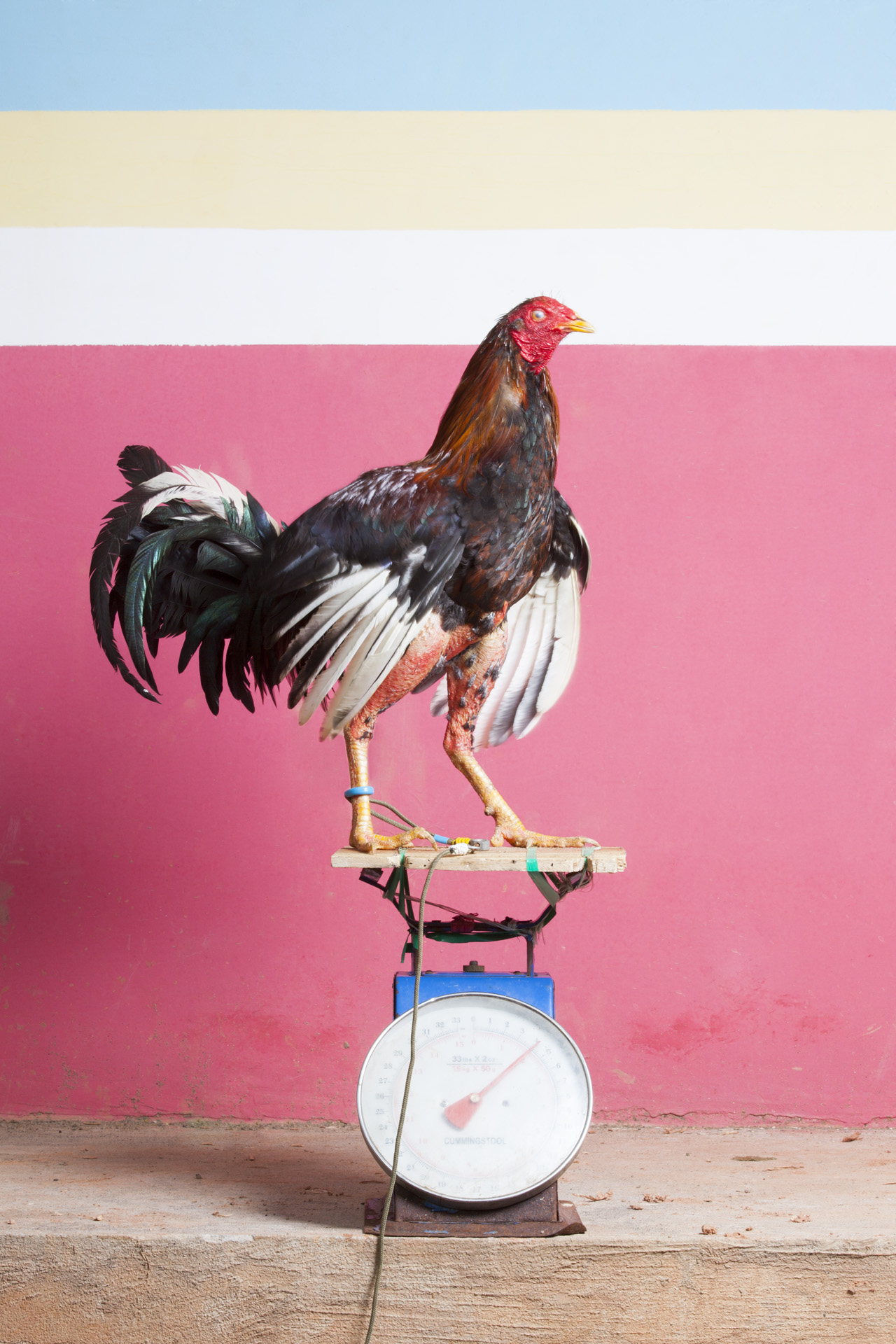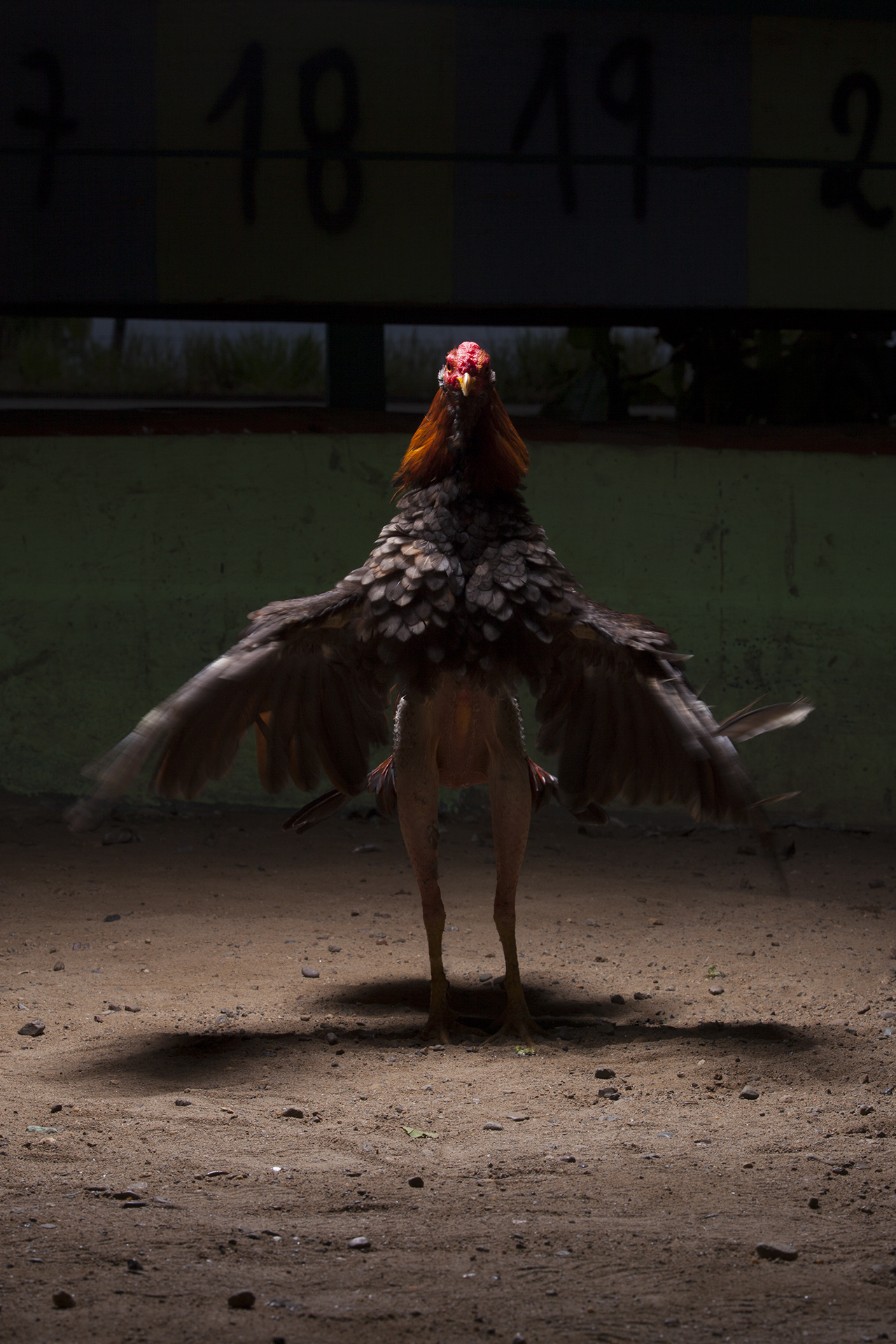Canta Gallo
La cultura popular es considerada como uno de los elementos que configuran y definen la personalidad colectiva de los pueblos, subraya la riqueza de la diversidad cultural y los valores que se transmiten oralmente en los diferentes grupos y comunidades.
Las riñas de gallos constituyen así una tradición rural de la selva del Putumayo, impuesta durante siglos por la voluntad colectiva y que no ha variado su movimiento interno a pesar de los cambios histórico-sociales a lo largo del tiempo.
Por un lado, este tipo de ave entró a Colombia por Cartagena procedente de España y llegó a la región del Putumayo hacia mediados del siglo XVI, junto con los conquistadores ibéricos que buscaban oro y quinina. Por entonces, la actividad fue perseguida, limitándola en unos casos y prohibiéndola en otros, pues los colonizadores estimaban que su práctica enardecía a los criollos y los incitaba a la lucha, ya que las galleras solían ser punto de reunión para conspirar contra la corona europea. Y, en la actualidad, constituye una de las costumbres más arraigadas del hombre de campo.
Por otro lado, el gallo es un animal muy territorial. Si se ve amenazado, emite su canto para alejar a sus rivales. Por eso si un gallo se atreve a invadir el territorio de otro, es probable que haya un enfrentamiento, incluso a muerte, para quedarse con el dominio. Será por esto que sus admiradores asocian esta actitud con la virtud humana del coraje y la valentía.
Ahora bien, las galleras elegidas para desarrollar el proyecto se encuentran en el Bajo Putumayo, zona de frontera entre Colombia y Ecuador. Son frecuentadas por colonos y trabajadores de la coca que buscan resguardarse en el anonimato. Es por eso que en la serie “Canta Gallo”, la artista se aparta del bullicio y del espectáculo de las peleas, para acercarse a esta tradición popular con aguda sensibilidad. A través de sus retratos podemos apreciar la elegancia austera y misteriosa del gallo fino de pelea. Son gallos mestizos, que llevan sangre de varias razas para combinar estilos de lucha.
Por último, es preciso destacar que el proyecto fue concebido en época de post-conflicto, ya que esta área formaba parte del Frente 48 de las FARC y estaba terminantemente prohibido tomar fotografías en espacios públicos.
.
.
.
Canta Gallo / English Version
Popular culture is considered as one of the elements that configure and define the collective personality of peoples, underlining the richness of cultural diversity and the values that are transmitted orally in different groups and communities.
Cockfighting is thus a rural tradition in the Putumayo jungle, imposed for centuries by the collective will and that has not changed its internal movement despite historical-social changes over time.
On the one hand, this type of bird entered Colombia through Cartagena from Spain and reached the Putumayo region around the middle of the 16th century, along with the Iberian conquerors who were looking for gold and quinine. At that time, the activity was persecuted, limiting it in some cases and prohibiting it in others, since the colonizers considered that their practice inflamed the Creoles and incited them to fight, since the cockpits used to be a meeting point to conspire against the European crown. And, at present, it constitutes one of the most deeply rooted customs of the country man.
On the other hand, the rooster is a very territorial animal. If threatened, he issues his song to drive away his rivals. So, if one rooster dares to invade another’s territory, there is likely to be a showdown, even unto death, to take control. It will be for this reason that his admirers associate this attitude with the human virtue of courage and bravery.
That said, the cockpits chosen to develop the project are located in Bajo Putumayo, the border area between Colombia and Ecuador. They are frequented by colonists and coca workers who seek to protect themselves in anonymity. That is why in the series “Canta Gallo”, the artist departs from the hustle and bustle of the fights, to approach this popular tradition with acute sensitivity. Through these portraits we can appreciate the austere and mysterious elegance of the fine fighting cock.
Finally, it should be noted that the project was conceived in the post-conflict period, since this area was part of the FARC’s 48th Front and it was strictly prohibited to take photographs in public spaces.

